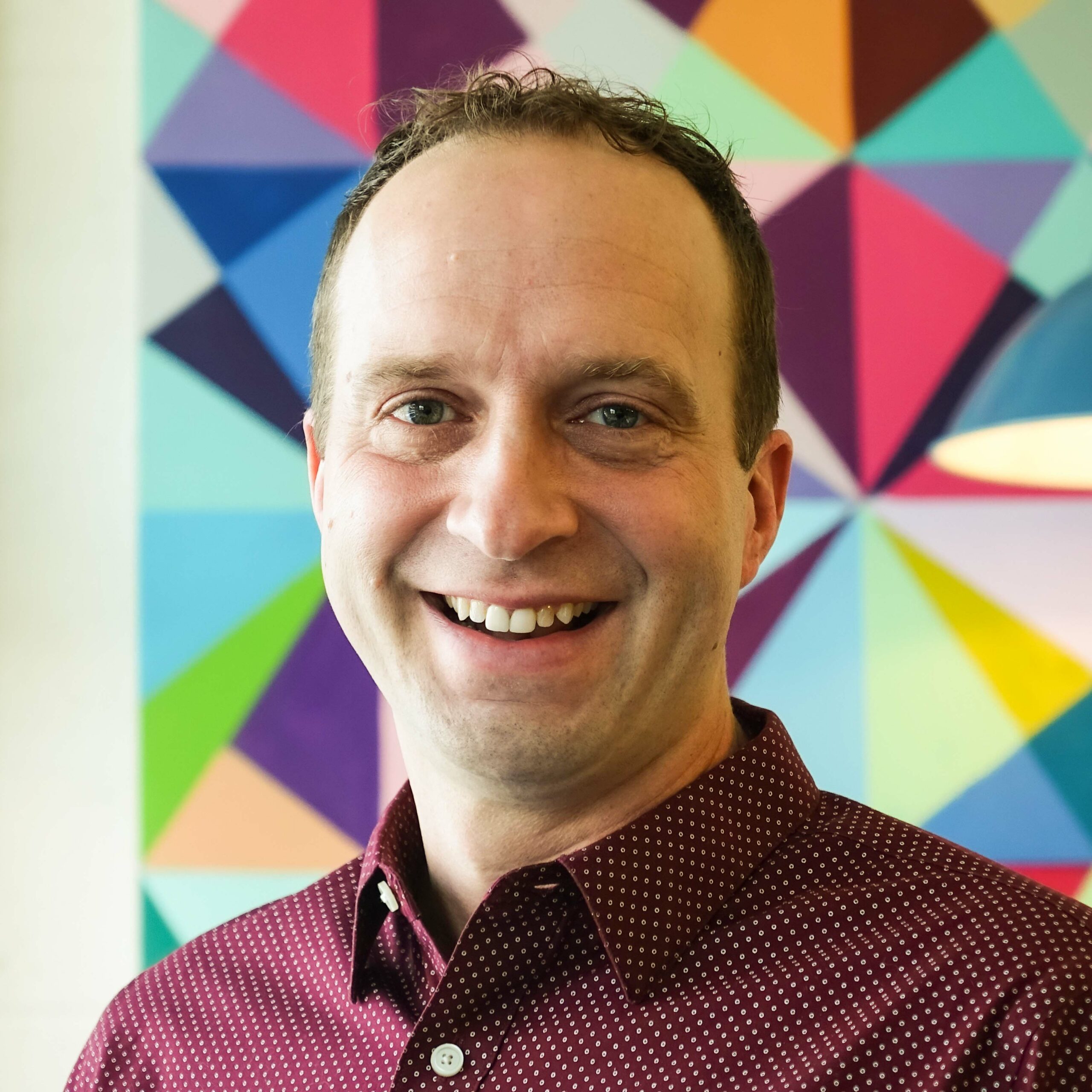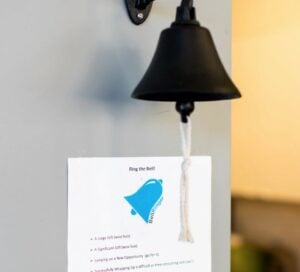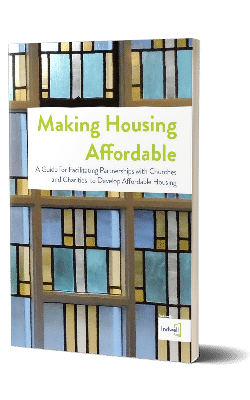Jeff was interviewed recently on CBC’s Metro Morning, discussing some of the challenges and opportunities that are facing supportive housing charities like Indwell. Jeff, with host Jill Dempsey, discuss:
- How the HST rebate for developers will help us save $800,000 on our latest project in Mississauga
- How the need for supportive housing in Peel Region is enormous and hidden, with over 31,000 people waiting for a unit
- How supportive housing transforms lives and communities, with examples of people who moved from homelessness or unsafe conditions to permanent and stable homes
- How the solution to homelessness is possible and effective, but requires societal willingness and funding from all levels of government
Transcript
Jill
We’re going to be speaking with Ontario’s finance minister in about a half an hour. He unveiled the government’s fall economic statement yesterday, and one of the key parts of it is an HST rebate for developers building rental housing. That is a welcome step for people like my guest. Jeff Neven is CEO of Indwell. It’s a charity that builds supportive and affordable rental housing. They just bought a property for a third housing project in Mississauga. Jeff, good morning. Thank you for being here. Good morning, Jo. I’d like to talk about the difference the HST rebate is going to make. What does that look like for you in terms of your calculations?
Jeff
Sure. HST rebate is a significant amount for us on that property you just mentioned that we recently purchased a couple weeks ago. in Clarkson and Mississauga, that project, we’re looking at about 50 units there. And if we use the rough number of about a $20 million project, it hasn’t gone out to tender yet, but The difference for us would be, you know, typically the HST, the 13% would be charged. And as a charity, we fall under an exemption. Actually, most builders fall under some type of exemption where they get part of it back. In our case, it’s almost 70% that we already got back. So what we’re talking about is that additional 30% of the HST that we don’t get back. But on a project like that, it’s about $800,000. makes a difference. And otherwise, those funds would have to be fundraised or come from somewhere to help build the affordable housing.
Jill
So it makes the fundraising efforts just a little bit easier.
Jeff
That’s right. Building affordable housing is actually quite a challenge. Sometimes we refer to it as lasagna layers of funding. And so we’re looking for all kinds of different layers from donations to grants to municipal, provincial, federal contributions. And so for us to start out with an $800,000 reduction in the cost is, you know, the first layer of that to fill in that funding gap.
Jill
What can you tell me about the need for supportive housing in Mississauga? What does that look like?
Jeff
Yeah, the need in Mississauga and in Peel Region is a bit more hidden than perhaps you might see in other places. Indwell provides affordable and supportive housing across southwestern Ontario from Mississauga all the way to London with stops of Hamilton and Kitchener and St. Thomas and Woodstock and other places in between. Specifically in Mississauga and in Peel Region, The need is enormous. Actually, a staff report to the Peel Region Council earlier this year in July said that we need over 31,000 supportive housing units. So this is for folks who need both deeply affordable but also need healthcare supports to remain housed. So the need is over 31,000 and currently in the Peel Region we have 322 units that meet that need. So it’s less than 1%. How do you even fill that?
Jill
Jeff, how do you even fill that gap?
Jeff
So we need a lot of $800,000 of funding layers, don’t we? Yeah, the need is enormous. In the Peel region last year, there were 4,100 unique individuals who were homeless. Of those, nearly 600 were sleeping rough. And that’s what we found in our first two projects in Mississauga. The first one opened a little over a year ago in Port Credit. And the folks who were moving in, you know, one gentleman, I’ll call him Michael, had slept in the park adjacent to our building for years and when and watch the building go up and he moved in with only a grocery bag of items and you can imagine the difference of being able to start to build your life and build goals when you have permanent safe affordable place to live and another gentleman shared with me just last week. He says, you know where I lived, right? Before I moved in here. And I said, no, tell me. He said, I rented a furnace room in a house where that was shared by many, many people. And I lived in that furnace room for years and years, no windows, shared a bathroom down the hall with many other people and had no access to kitchen facilities. And he was paying I think he said he was paying over $800 a month, but that was all he could afford on his disability pension. So the need is significant. The good news is we have a solution that is very effective. Permanent supportive housing with good quality housing that meets people’s needs and wraps around health care supports works.
Jeff
So we need a lot of $800,000 of funding layers, don’t we? Yeah, the need is enormous. In the Peel region last year, there were 4,100 unique individuals who were homeless. Of those, nearly 600 were sleeping rough. And that’s what we found in our first two projects in Mississauga. The first one opened a little over a year ago in Port Credit. And the folks who were moving in, you know, one gentleman, I’ll call him Michael, had slept in the park adjacent to our building for years and when and watch the building go up and he moved in with only a grocery bag of items and you can imagine the difference of being able to start to build your life and build goals when you have permanent safe affordable place to live and another gentleman shared with me just last week. He says, you know where I lived, right? Before I moved in here. And I said, no, tell me. He said, I rented a furnace room in a house where that was shared by many, many people. And I lived in that furnace room for years and years, no windows, shared a bathroom down the hall with many other people and had no access to kitchen facilities. And he was paying I think he said he was paying over $800 a month, but that was all he could afford on his disability pension. So the need is significant. The good news is we have a solution that is very effective. Permanent supportive housing with good quality housing that meets people’s needs and wraps around health care supports works.
Jill
You talked about the latest project and the latest piece of land that you acquired. And I know one of the biggest pressure points in Toronto that we hear about is the availability of real estate to build on. Is that a different scenario in Peel region?
Jeff
Peel Region is quite challenging to find land in the other cities further southwest. It’s not our primary challenge. It is challenging in Peel Region to find land. Across our organization, we have over a dozen sites that we’re looking for funding to Greenlight. So actually, land is not usually the most difficult thing, and even in this case, can be found. Finding these predictable and timely funding is the biggest challenge.
Jill
There’s so many challenges when it comes to this kind of supportive housing, the economy right now, interest rates, the willingness to build in the midst of this financial situation. What’s your message for all level governments at this point?
Jeff
I think my message would be this. Sometimes there’s myths that the issue of homelessness is too big. It’s too complex. There’s nowhere to start. But I would say this is that in every community and right here in Mississauga, we know the names of those who are homeless. Most have had a needs assessment done. We know the healthcare needs that they have. So we know the people and we actually know the solution. And now we just need to move towards a societal willingness and interest in putting the infrastructure in place to make it possible to move people from homelessness into permanent housing. So the good news is there is a solution. And the good news is that we have opportunity to step forward with those solutions.
Jill
You mentioned a couple of individuals when they first moved in to their new homes. Have you had a chance to touch base with them since then? I’m wondering what difference or what change you’ve seen in these individuals once they’ve had a place to call home?
Jeff
It’s an absolute change in every respect. You know, I’ve never met someone who’s sleeping under a tarp who says, you know, this was the best time of my life for my mental health or my substance use just decreased during that period. That’s not the case. We need good, stable housing. And I’ll give you an example of a gentleman who in Port Credit are building chairs. Our commercial tenant there is the Compass Food Bank. And one of our tenants who used to frequent the food bank there now buys a little extra of his own food because he can afford to buy his own food and he donates that back to the food bank. And that’s what we see the difference, that kind of transformation of all of life that happens.
Jill
Well, I appreciate you taking the time to talk about this issue and to share the story of these individuals. Jeff, thank you.
Jeff
Thank you so much.














